Peugeot 508 Review 2025: Price, specs & boot space
Written by Andrew Brady
Quick overview
Pros
- Looks sensational
- Interior wows, too
- Decent electric-only range with the plug-in model
Cons
- Space compromised by the rakish design
- Interior looks good, but there are some low-rent plastics
- Touchscreen controls everything and odd driving position not ideal for everyone
Overall verdict on the Peugeot 508
"If the Peugeot 508 was a chair it would be Ame Jacobsen’s Egg Chair. Designed in 1959 for the Radisson hotel in Copenhagen, it showed that everyday items could be jaw-droppingly stylish if you don’t mind sacrificing a little bit of practicality, and paying a premium for the privilege."
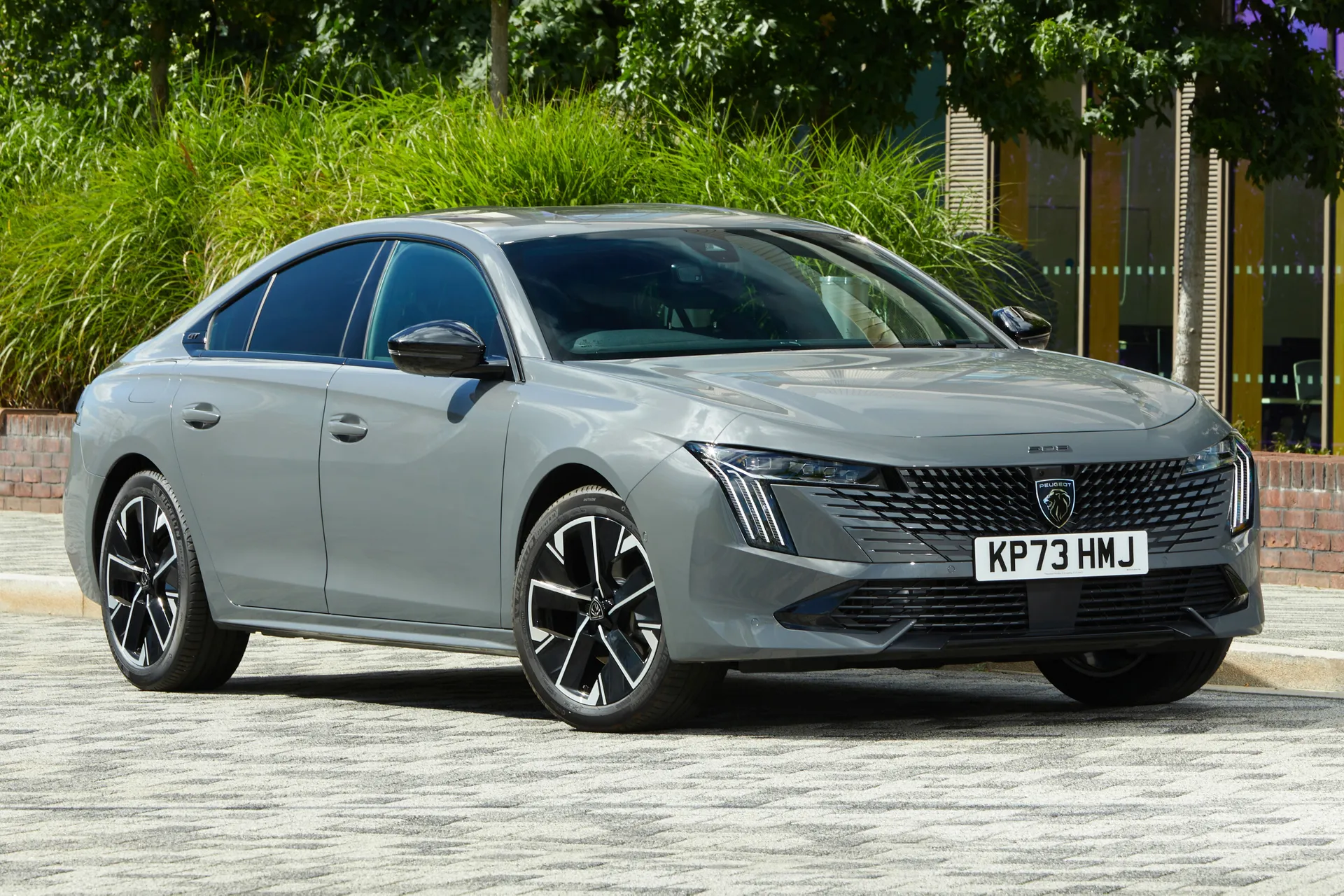
Peugeot's large family hatchback follows that recipe to the letter, as you'll discover in our Peugeot 508 review. It has a svelte shape on the outside and sporty feel on the inside, yet back seat space has been sacrificed, and prices are on a par with those of premium rivals.
In fairness, Peugeot had to try something. The marketplace the 508 competes in has been decimated by premium cars like the BMW 3 Series, Audi A4 and Mercedes-Benz C-Class, not to mention the relentless onslaught of family SUVs. Indeed, many of Peugeot’s rivals have simply packed up and left the large family hatchback and saloon marketplace, and the 508 is one of the only ones left.
There’s no denying, though, that it’s one very sharp-looking car, with its coupe-like roofline, bold grille and LED lighting and the sort of busy surfacing that make it really stand out. A facelift in 2024 arguably made it stand out even more. Its relative rarity helps, too, because that's certain to be attractive to those saloon and hatchback buyers looking for something different from the premium norm.
Certainly, the 508 has the capacity to wow in a number of ways. The interior, which the company dubs i-Cockpit, sees a large touchscreen in the centre of the tiered dashboard, while ahead of the driver is another digital display that offers configurability for your instrumentation.
Early on, the engine range was broadly based around turbodiesel offerings, with 1.6-litre and 2.0-litre choices, although there was also a 1.6-litre petrol engine offering various outputs, and topping the range was a plug-in hybrid that promised the best of both worlds: fine daily economy and the potential for electric-only motoring of between 33-39 miles, and the long-legged ability of conventional propulsion thanks to the petrol engine. Later on, the range was rationalised to include just the 130PS 1.2-litre Puretech petrol and the 225PS PHEV, although the even-rarer-still Peugeot Sport Engineered version gets its own 360PS version of the hybrid powertrain.
In all but the early entry-level turbodiesel, shifting gears is taken care of by an eight-speed automatic transmission, and for those wanting a bit more practicality Peugeot offers the 508 as an estate, the Peugeot 508 SW.
A slightly different take on the mainstream family car, then, and in many instances it’s a successful one, but the 508 doesn’t offer quite the rounded skillset of some of its more sober-suited alternatives. Whether that’s a sacrifice you’re prepared to make depends on how you’re likely to use it, but if practicality isn’t particularly high on your list of priorities, and head-turning looks are, then the Peugeot 508 might well suit you down to the ground.
Looking for a used car for sale? We've got 100s of Peugeot Approved Used Cars for Sale for you to choose from, including a wide range of Peugeot 508s for sale. If you're looking for the older version, you need our Peugeot 508 (2011-2018) review.
Is the Peugeot 508 right for you?
It’s a brave buyer who diverts away from the upmarket German saloons that have decimated the mainstream models. But then, that’s exactly the point of the 508, and if you’re going to be bold and different, then you might as well be noticed for it. And you’ll undoubtedly be noticed in the Peugeot 508.
It’s a handsome car, with a rakish coupe-like profile and some really neat detailing outside, while the interior is also knock-out in relation to how it looks, even if in reality, it can be a little bit fiddly to operate.
It’s fairly unremarkable to drive by the standards of its premium rivals: its super-light, direct steering brings some agility, but it’s not as sporting as any of those German three. And of course, if you need more space, there's the equally handsome Peugeot 508 SW estate.
What's the best Peugeot 508 model/engine to choose?
The likelihood is you’ll be restricted by budget, or the monthly payment via your company car scheme, but it’s difficult to ignore the low running costs of the plug-in hybrid model, which mates a 1.6-litre petrol engine to an electric motor and battery pack. It’s available from the Allure trim upwards, and for most buyers the specification it offers will be more than satisfactory.
What other cars are similar to the Peugeot 508?
SUVs might be the dominant sellers these days, but there are still plenty of choices as alternatives to the Peugeot 508. You'll have lots more choice if shopping on the used car market, as many of the 508s rivals have been discontinued in the face of tricky market conditions brought on by the immense popularity of SUVs.
There's the Vauxhall Insignia and Ford Mondeo, which are both practical and good value, and we'd always highly recommend the Mazda 6 and Volkswagen Passat saloon as well. The Volvo S60 offers a slightly more premium vibe.
The Skoda Superb is one on the only mainstream rivals left that's available as a new car. The 508 however, is arguably a bit more stylish than those cars and attempts to move things upmarket, meaning it competes with the popular BMW 3 Series, the Mercedes-Benz C-Class and the Audi A4. Don't forget the Jaguar XE, and if you really want something different, the Alfa Romeo Giulia is worth a look.
Comfort and design: Peugeot 508 interior
"Peugeot has been pushing its i-Cockpit architecture for a while now, where you view your instruments over the top of your steering wheel, rather than through it. It’s at its best in the 508, and familiarity will make it less jarring, but there’s no denying that Peugeot’s taking interior design in a different direction to its more mundane rivals."
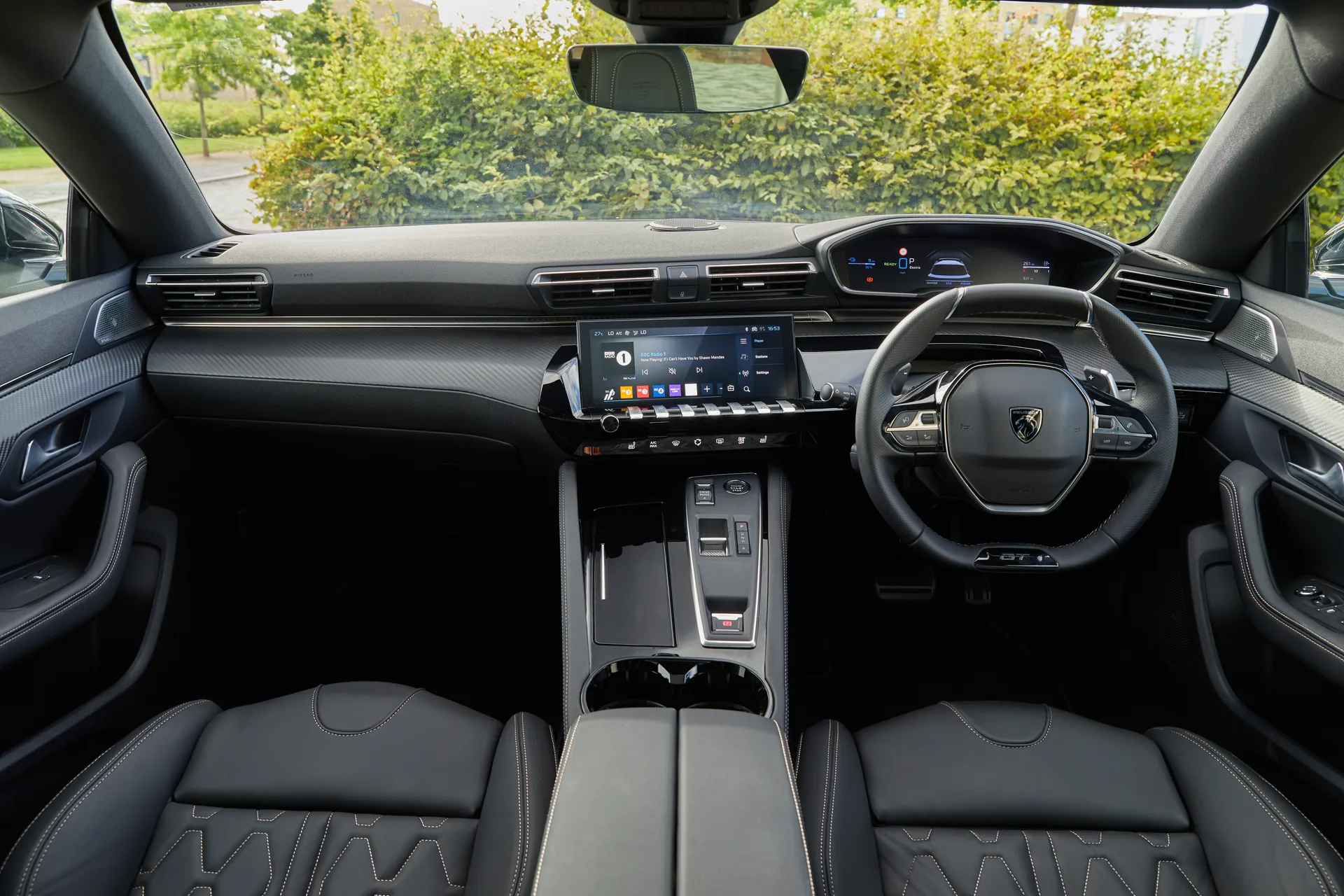
There’s a but here, though, because finding a driving position where you can see the instrument screen ahead of you can be problematic, particularly if you prefer your steering wheel to be placed in a conventional position.
Instead, you'll find the tiny, non-round steering wheel sitting awkwardly low, almost on your lap, to be able to read the screen behind it. That might not bother some, but for others it’s not just inconvenient and unconventional, but uncomfortable.
Quality and finish
Just opening the doors hints at Peugeot’s upmarket goals with the 508. Those doors are frameless, with the glass sitting flush with the bodywork. This is a feature more common to coupes and drop-tops than a family hatchback. That impression of quality continues inside, because the 508’s cabin a visual treat, with dramatic shapes and some really nice materials and finishes.
The effect is lessened a bit with a more detailed glance, though, because in a few places, there is some evidence of lower-quality materials, notably some hard scratchy plastics on the lower door trims. Also, the ‘piano key’ controllers, which provide shortcuts to the touchscreen functions, feel a bit insubstantial to operate. Indeed, most of the controls lack the sort of assured precision and weighting that mark out the best cars in the class.
Infotainment: Touchscreen, USB, nav and stereo in the Peugeot 508
Every single 508 comes with Peugeot’s i-Cockpit, which sees a central touchscreen with those piano key shortcut buttons, as well as a digital screen taking the place of the conventional instruments.
You might find your head craning to read the instruments behind the incredibly small, oddly-shaped steering wheel. The 12.3-inch screen is configurable, but really, the classic dials mode is the best, showing your speed in big numbers between the digital representations of a rev-counter and speedometer.
The infotainment screen was 8.0-inches with the early entry-level Active model, and the system has 3D navigation with TomTom live updates and traffic camera zones, voice activation, DAB and a mirror screen system for both Apple CarPlay and Android Auto functions.
With the Peugeot 508 Allure model upwards, that central screen becomes a 10.0-inch item, and a parking camera is added as well. The touchscreen menus do need a bit of practice due to a slightly strange layout, and the screen isn't the quickest to react. But the biggest issue is the complexity of the system, because the minimalist interior design means bundling everything into the touchscreen interface, and that makes it needlessly fiddly to use. Simple tasks like changing the temperature or fan speed for the ventilation become a long-winded, eyes-off-the-road undertaking, which isn’t just frustrating, but potentially dangerous.
Space and practicality: Peugeot 508 boot space
In terms of external dimensions, the Peugeot 508 measures 4750mm in length, 1859mm in width and 1403mm in height.
There are inevitably some sacrifices for style and with the 508 that’s fairly apparent in the rear seats and boot.
The coupe-like roofline significantly impacts rear headroom (exacerbated with the panoramic sunroof) with it tight for all but the shortest of adults there, and two only – the third, middle seat is too tight to count as a proper seat for anything but the shortest of journeys.
The small rear windows heighten the slightly claustrophobic effect, making it feel cramped – despite decent leg, if not foot, room in the back. Think small, supple kids in the rear, then, who can buckle themselves in, as getting baby seats in is pretty tricky thanks to the small door opening.
There are a pair of Isofix child seat mounts in the rear, as well as one on the front passenger seat. The rear seats fold in a 60/40 split, the seatbacks not folding flat, but offering a respectable, and long loadspace with a maximum capacity of 1537 litres. You get a 487-litre boot with the seats up, which is on a par with cars like the Vauxhall Insignia, and, being a hatchback the space is easily accessed.
Up front there’s plenty of cubby storage, with a deep lidded box between the seats, a further lidded recess to the left of the automatic gearlever, some door bins a shallow glovebox and a pair of deep cupholders. In the rear there are map nets on the front seatbacks, a couple of small doorbins and, from Allure up, a folding armrest with a couple of cupholders, Allure models also get a small ski hatch for longer, through loads.
Handling and ride quality: What is the Peugeot 508 like to drive?
"A front-wheel drive car isn’t ever going to offer quite the dynamic delights of its premium, rear-wheel drive competition, but the 508 strikes a good balance between agility and comfort."
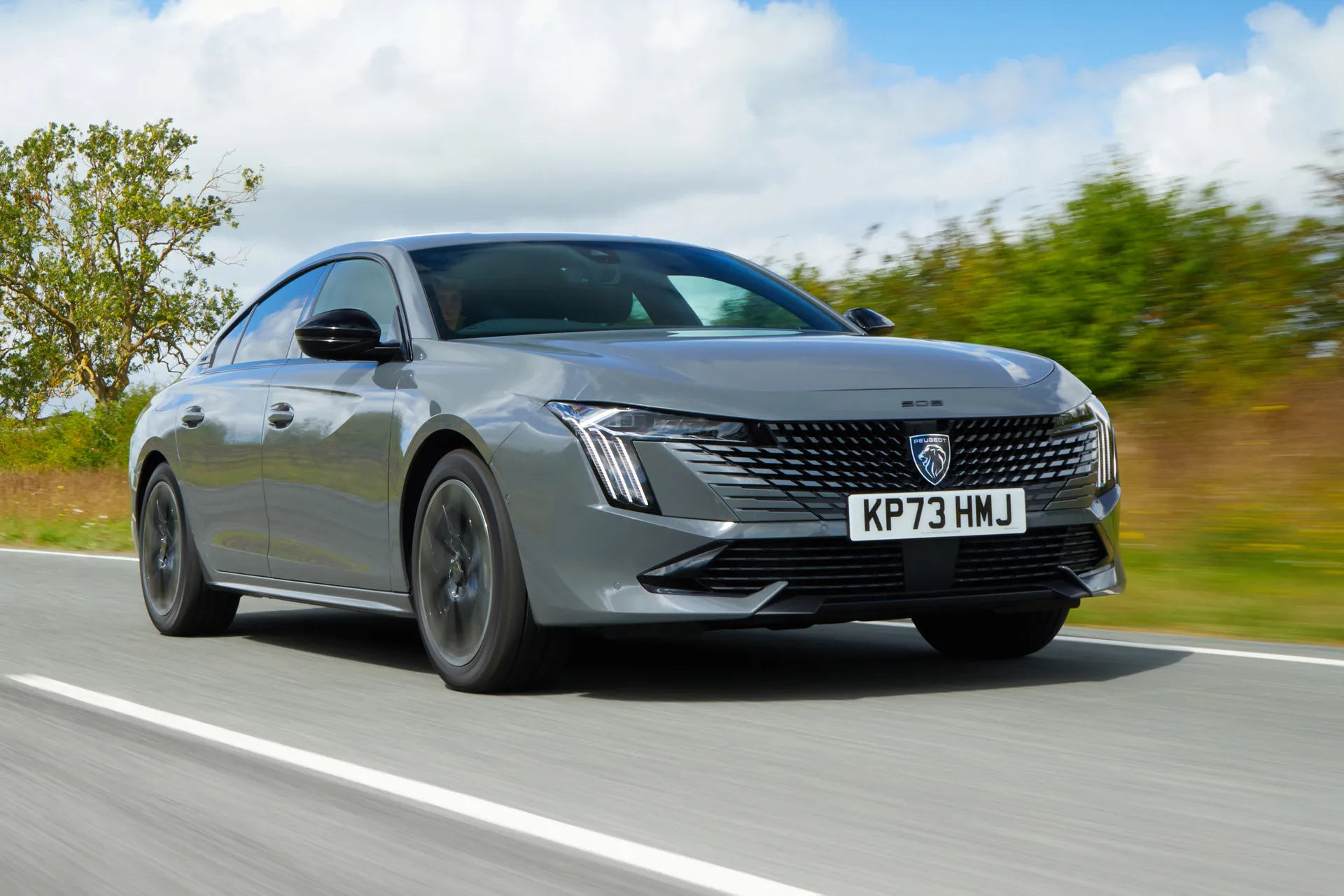
The steering is super-light, adding to the sense of nimbleness, and grip levels are high, too, although there’s precious little feel through the steering wheel to tell you that. All 508s corner convincingly, though, with good body control, but even so, the 508 feels at its best when it’s unhurried. It’s a consummate cruiser rather than a back-road blaster.
All versions ride well, because the bigger wheels on higher-spec versions don't really have a negative effect on the ride quality, which is not always a given. Only really rough roads will unsettle the car.
The active suspension offered on flagship models (early GT models and later Peugeot Sport Engineered versions) offers a choice of modes, although the differences are slight, and only really add compromise to the ride: be it more float at the softer end of the spectrum or unwanted brittleness at the more sporting end.
What engines and gearboxes are available in the Peugeot 508?
Early on in its life, the 508 was offered with quite a wide range of petrol and diesel engines, the latter being more popular at the time, ad the was also a plug-in hybrid version at the top of the range.
The French have always done good diesel engines, and the BlueHDI in the 508 was no exception. The entry-level 1.5-litre turbodiesel offered 131PS, and it was fine if you’re weren't in a hurry. It was offered with a manual transmission, the only model to get one.
The 2.0-litre diesels were punchier, with 163PS or 177PS. The 163PS was the pick, because it was a lot cheaper and hardly any slower. It was a similar story with the petrols in the range. With 181PS or 224PS, both were smooth and responsive and offered a good turn of pace, and the more powerful option offered very little advantage in the real world.
The most powerful engine was the Hybrid, which combines a 1.6-litre petrol engine with an electric motor for a combined output of 225PS. It's a smooth and muscular powertrain, and has the potential offer really good fuel economy thanks to a fairly impressive all-electric range.
All but that entry diesel came with an eight-speed automatic, which was mostly impressive and smooth, though can get a bit flustered if you’re in any way hesitant with the accelerator.
As time went on, various engines fell off of the pricelists, and by the time the car's 2024 facelift rolled around, only two were left for mainstream versions. One was the plug-in hybrid just mentioned, while the other was a 130PS 1.2-litre turbo petrol. If you're worried that the 508 would be slow with such a small engine, then don't: it's surprisingly punchy. The Peugeot Sport Engineered version, meanwhile, got its own version of the PHEV powertrain with 360PS and four-wheel drive, but we never got the chance to try it.
Refinement and noise levels
Refinement is good across the line-up. The levels of wind noise remain fairly hushed, and only the roughest road surfaces result in any meaningful level of road noise. The petrol engines are a little bit quieter than their diesel relations, although the need for higher revs does make them a bit less easy on the ear than the lower-rev torque that comes with the diesels.
For the ultimate refinement, the plug-in Hybrid powertrain is the one to go for. It's able to cruise around really quietly on electricity alone for around 30 miles or so. When the engine does cut in, it does so relatively smoothly.
Safety equipment: How safe is the Peugeot 508?
The standard safety equipment list is lengthy. You get ABS brakes with EBA (Emergency Brake Assist), Electronic Brake Force Distribution, Electronic Stability Control, a tyre inflation detector, speed limit recognition and recommendation, and a driver attention alert system. You get front passenger- and driver airbags, and thorax airbags, front- and rear curtain airbags, three Isofix child seat mounts (two rear, one for the front passenger seat) and an active bonnet. What's more, you get Advanced Automatic Emergency Braking, Distance Alert and Lane Keeping Assist with Road Edge Detection.
Opt for the Allure trim and you also gain the Safety Plus Pack, adding Active Blind Spot Assist and an advanced driver attention detection system. Range-topping GT trim gets a Drive Assist Pack Plus, which adds ACC Stop and Go adaptive cruise control and Lane positioning assist.
There’s an SOS Connect system on all 508s, too, which can be triggered by pressing a button, or it activates automatically when an airbag is activated, alerting emergency services with your precise location.
The Peugeot 508 was awarded the full five-star rating from Euro NCAP when it was crash-tested in 2018.
Maximum EV range in the Peugeot 508
Early examples of the plug-in Hybrid had an official electric-only range of between 33-39 miles from full to flat battery. That’s enough for most commutes, though our testing reveals a real-world range of about 25 miles on electric mode alone. That's still a useful distance, and there are three modes to pick from, Eco prioritising range, Normal being best foir daily usage, and Sport focussing on performance.
Improvements over time saw the 225PS PHEV's electric-only range creep up to between 34-42 miles, while the system in the Peugeot Sport Engineered high-performance version doesn't do quite as well, with an official range of just 34 miles.
MPG and fuel costs: What does a Peugeot 508 cost to run?
"With a range of petrol, diesel and plug-in hybrid powertrains that has changed so much over time, there's also been a lot of change when it comes to the 508's fuel economy."
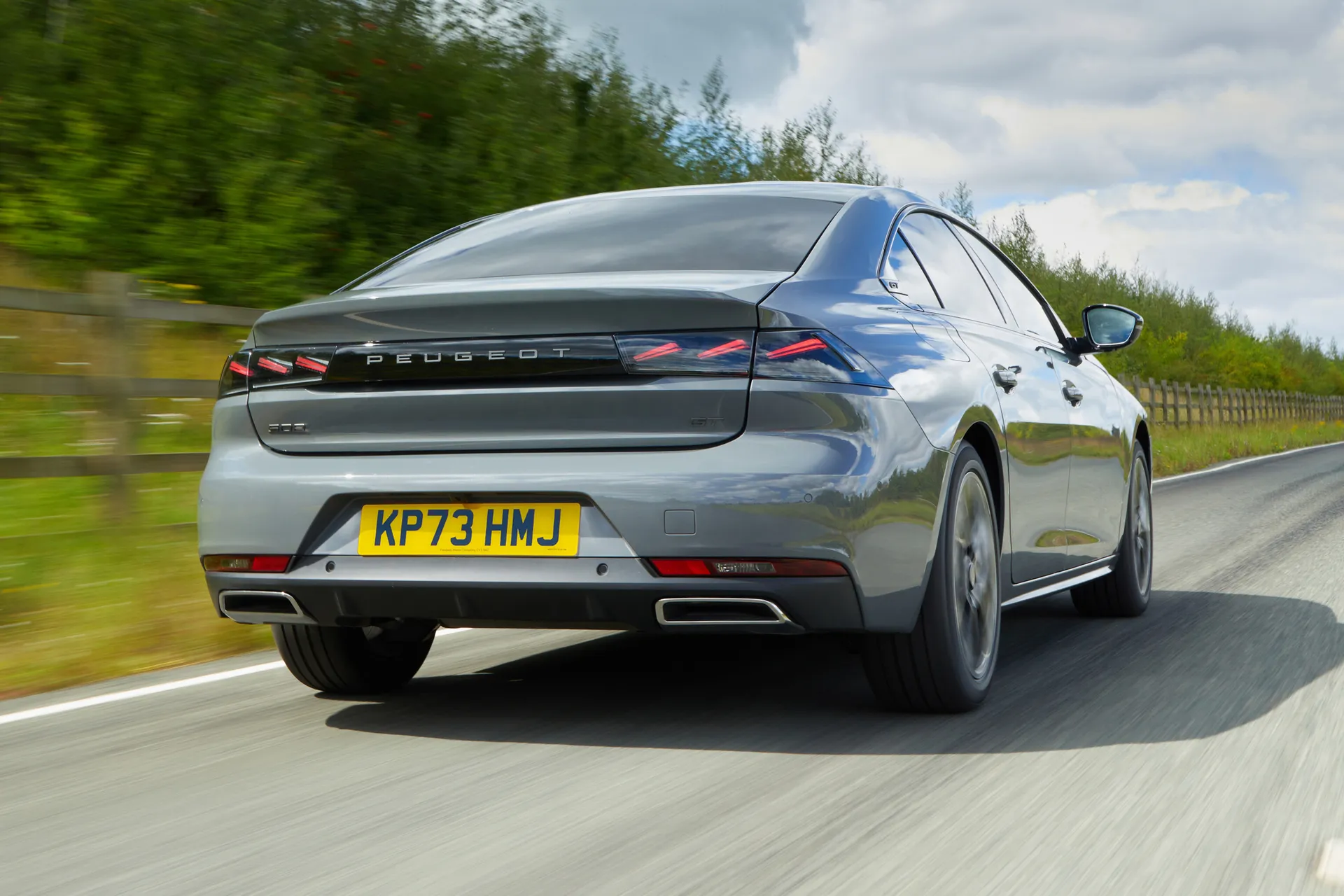
In early cars, the petrol engines returned between 37-45mpg on the official WLTP combined consumption cycle. That encompasses both power outputs and all trim levels. The manual lower-powered diesel manages between 53-63mpg, with the automatic about 1mpg worse, while the 2.0-litre turbodiesels are between 45-52mpg, with the slightly lower powered version being the more parsimonious of the duo.
The plug-in Hybrid was quoted at up to 235mpg early on, which improved to 275mpg over time. The high-performance version in the Peugeot Sport Engineered model brings this down to 158mpg as a maximum. Either way, you'll probably not get anywhere near this figure, unless your journeys are sufficiently short and your charging regime is sufficiently rigorous, that you hardly ever call upon the petrol engine.
Charging that plug-in Hybrid will take about 1 hour and 45 minutes from a 7kWh wallbox, with a full charge from a domestic three-pin socket taking 7 hours and 10 minutes.
WLTP figure suggest you should expect somewhere between 43-50mpg on the 1.2 Puretech petrol version.
Insurance groups and costs
Depending on the engine-and-trim combo that you go for with your Peugeot, your car will have an insurance grouping of between 21 and 36 (of 50, 50 being the most expensive) for the mainstream versions. That means premiums won't be cheap, but they shouldn't be ruinous, either. The exception is the Peugeot Sport Engineered (previously known simply as the PSE) version, which sits in group 41.
How reliable is a Peugeot 508?
Peugeot hasn't exactly dazzled in the HonestJohn.co.uk Satisfaction Index in recent years, the brand coming 24th out of the 29 carmakers involved in the latest 2023 study. That said, we've heard of very few issues affecting the Peugeot 508.
VED car tax: What is the annual road tax on a Peugeot 508?
All cars built since 2017 - that means all 508s - are charged at a single flat rate for road tax, that flat rate currently standing at £190 per year, although the hybrid models will get a discount, albeit of only a tenner.
However, cars that cost more than £40,000 when brand new, including optional extras, are subject to a luxury car surcharge that's payable for a temporary five-year period between years two and six of the car's life. That surcharge currently stands at £410, making your annual tax bill much steeper during that period.
Does that effect the 508? Well, it's a cracking question. There was a time early on in the car's life when only one version of the car bust that threshold, but these days, what with rising prices for everything, there's only one version that doesn't, and there'll be a massive sliding scale in between. Our advice? When buying a 508, perform an online check with the registration mark of the particular car your considering to be sure of what you're looking at.
How much should you be paying for a used Peugeot 508?
"If you’re looking at a brand new Peugeot 508, prices start at around £34,000 for the 1.2 petrol, and around £44,000 for the plug-in hybrid. Look at the Peugeot Sport Engineered, and you'll be paying around £54,000."
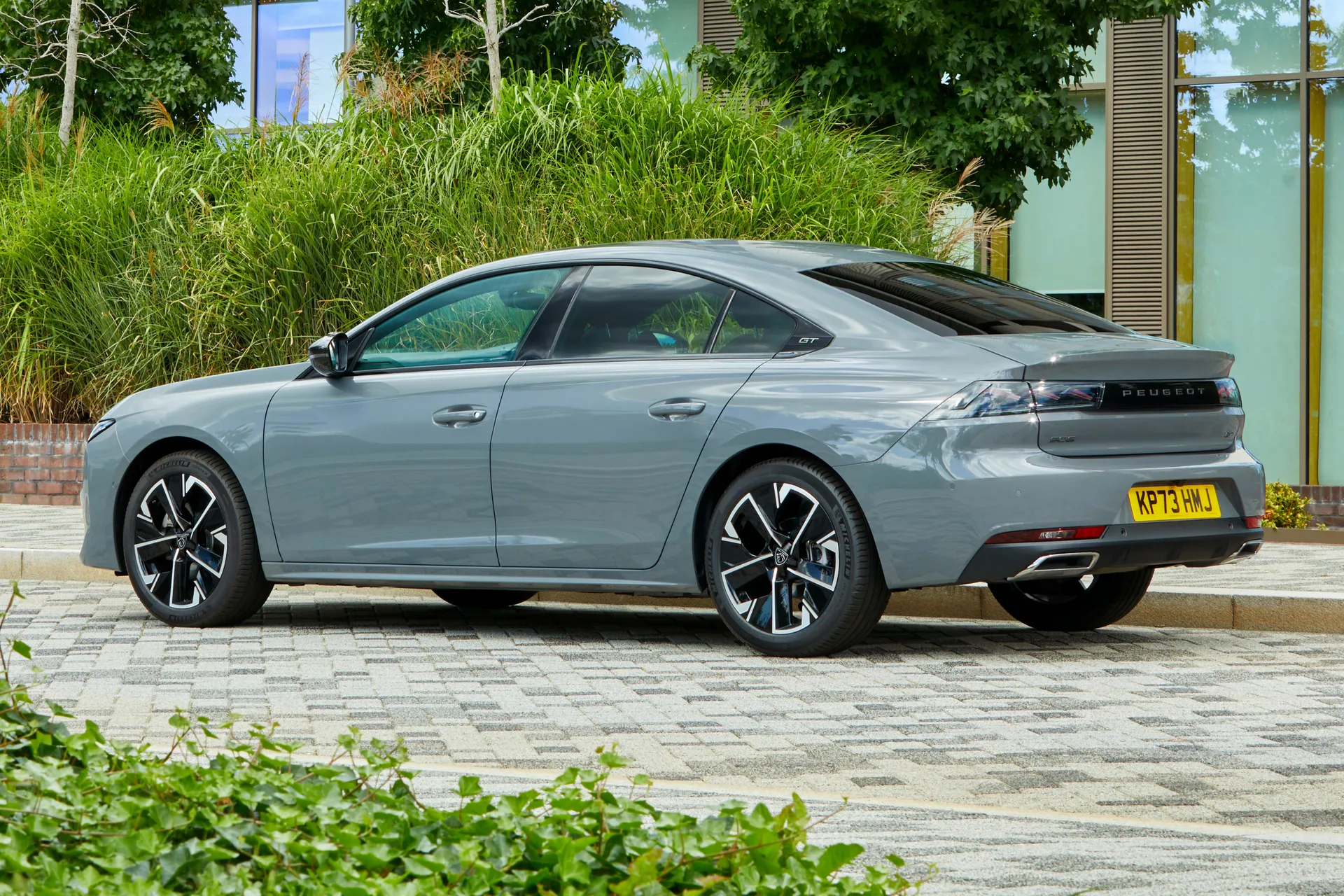
The smart money goes on a used model, though. There are some available in our listings for around £10,000 or £11,000, but these have fairly interstellar six-figure mileages on them. Pay a bit more - around £15,000 or £16,000 - and you'll cut that mileage by at least half, and you'll have a car from around 2020 in a very tempting spec. There are PHEV variants available at that money, too, which look particularly appealing.
Trim levels and standard equipment
Early on, Peugeot 508 Active models were the entry point to the range and have 17-inch alloy wheels that look a little small in the 508’s large arches. In terms of equipment, you get dual-zone climate control, rear parking sensors, a leather-trimmed steering wheel, automatic headlights and automatic windscreen wipers. Even the basic infotainment system is decent meaning you get 3D navigation with an 8-inch touchscreen, digital instruments, voice recognition and DAB, Apple CarPlay/Android Auto.
The Peugeot 508 Allure models added to that list with the 10-inch high-definition touchscreen, keyless entry, front parking sensors, electric lumbar and seat base adjustment and ambient lighting. You also get extra safety kit including a 180-degree parking camera and a blind-spot detection system.
508 GT Line models looked more stylish. They got 18-inch alloy wheels and a GT Line body kit, along with LED headlights and tail lights, plus tinted windows and a wireless charging pad for your compatible smartphone.
Peugeot 508 GT models sat at the top of the range and look just as sporty as GT Line cars, while adding autonomous driving aids, electrically adjusted driver and passenger massaging seats and a powerful Focal hi-fi system.
Later on, the regular trim levels were rationalised to include just the Allure and GT, and equipment provision was broadly similar to before. The Peugeot Sport Engineered version adds performance-enhancing kit, predictably, but also a few nice luxury goodies.
Ask the heycar experts: common questions
Where is the Peugeot 508 built?
What does SW mean on Peugeot?
Who designed the Peugeot 508?
How long is a Peugeot 508?
Get our latest advice, news and offers
Keep me updated by email with the latest advice, news and offers from heycar.
By submitting you agree to our privacy policy



